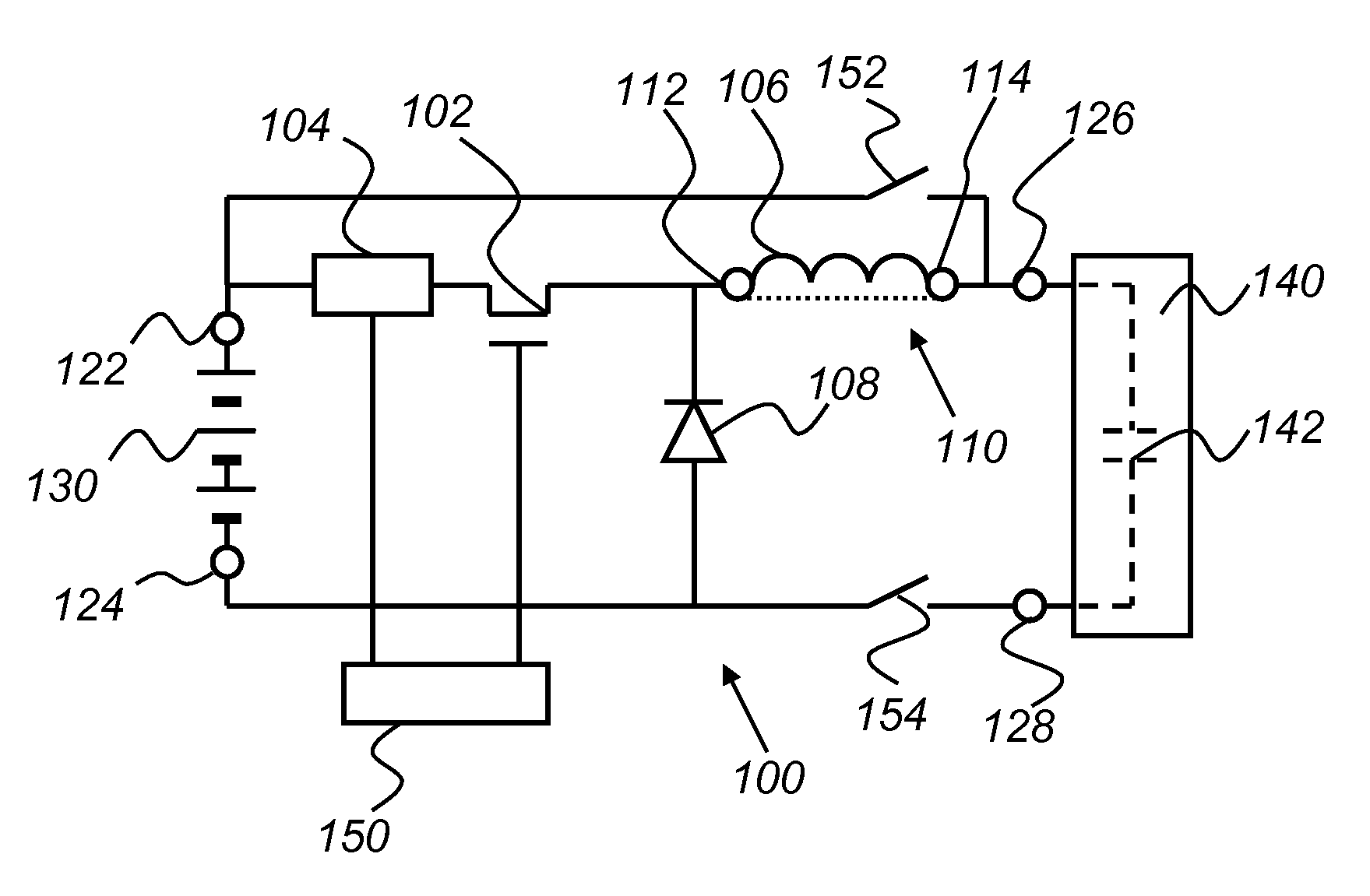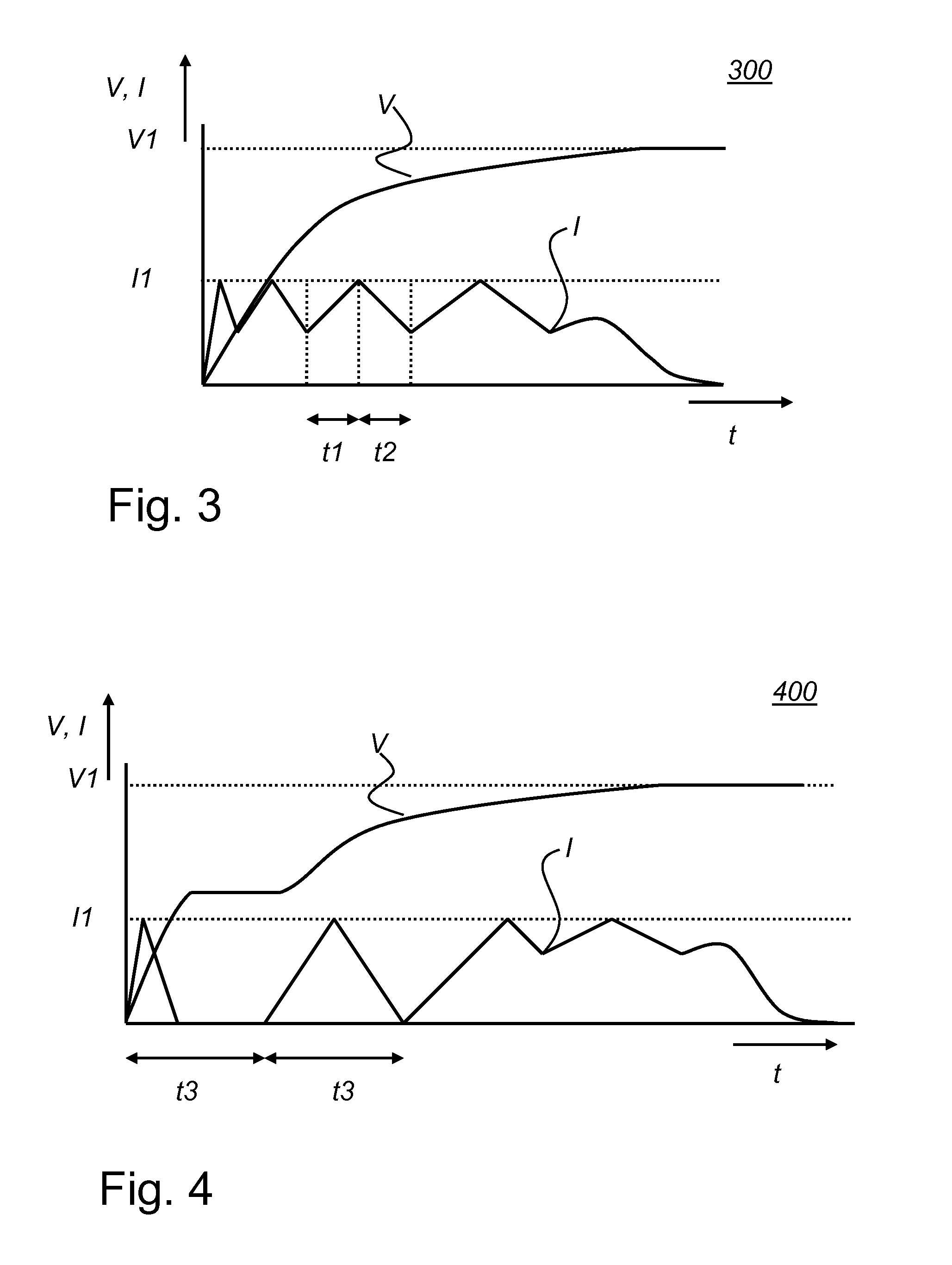Charging Circuit and Method for Operating Such Circuit
a charging circuit and circuit technology, applied in the field of power electronics, can solve the problems of limited number of pre-charge attempts, high current, and high cost of components, and achieve the effect of optimizing the circuit operation
- Summary
- Abstract
- Description
- Claims
- Application Information
AI Technical Summary
Benefits of technology
Problems solved by technology
Method used
Image
Examples
Embodiment Construction
[0025]FIG. 1 discloses a circuit 100 as an embodiment of the charging circuit according to the invention. The circuit 100 comprises a MOSFET 102 as a first switch, a current sensor 104, connected in series with the MOSFET 102 for sensing the current through the MOSFET 102, an inductor connecting element 110 comprising a first inductor connector 112 connected to the MOSFET 102 and a second inductor connector 114. An inductor 106 as an inductive element is connected in series with the MOSFET 102 and the current sensor 104 via the inductor connecting element 110.
[0026]The circuit 100 further comprises a first input terminal 122 and a second input terminal 124 that are both arranged to connect the circuit 100 to a battery 130 as a DC power source. A person skilled in the art will appreciate that also other DC power sources may be connected to the circuit 100, like a rectifier circuit connected to an AC power source. The circuit 100 also comprises a first output terminal 126 and a second...
PUM
 Login to View More
Login to View More Abstract
Description
Claims
Application Information
 Login to View More
Login to View More - R&D
- Intellectual Property
- Life Sciences
- Materials
- Tech Scout
- Unparalleled Data Quality
- Higher Quality Content
- 60% Fewer Hallucinations
Browse by: Latest US Patents, China's latest patents, Technical Efficacy Thesaurus, Application Domain, Technology Topic, Popular Technical Reports.
© 2025 PatSnap. All rights reserved.Legal|Privacy policy|Modern Slavery Act Transparency Statement|Sitemap|About US| Contact US: help@patsnap.com



